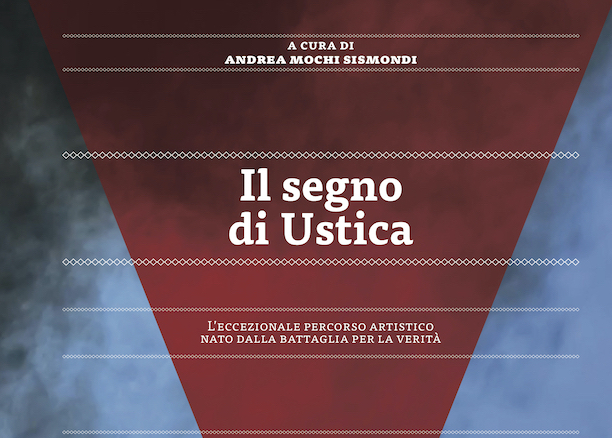The Sign of Ustica
 Il Segno di Ustica
Il Segno di Ustica
L’eccezionale percorso artistico nato dalla battaglia per la verità
[The Sign of Ustica. The extraordinary artistic journey born from the battle for truth]
a book curated by Andrea Mochi Sismondi
Edizioni Cue Press, Collana Il contemporaneo, 2021
Why do so many artists feel the need to engage with the Ustica massacre and with the multitude of questions that this event raises?
What are the specific features of this unique artistic phenomenon—one of a kind—that has generated innovative performances, precious poetic and musical compositions, extraordinary visual works, and films that have shaped the civic consciousness of millions of citizens?
From what vision did the proactive work of the Association of the Victims’ Families develop—an association that for decades has fought against lies and misdirection, creating opportunities for artistic experimentation and for cultural and political evolution?
Starting from these questions, Andrea Mochi Sismondi meets with the artists who have engaged with the massacre, to explore with them the different approaches that have shaped their work.
Thanks also to the rich iconographic material and to the conversations with scholars who have studied the phenomenon in depth, the strength of the works produced clearly emerges, bound together by a constellation of ideas that offers an original and incisive contribution to the reflection on the political dimension of art and its relationship with history.
The book has been available for purchase in bookstores, on the publisher’s website, and in online stores since June 22, 2021.
Andrea Mochi Sismondi is a writer and artistic director of the collective Ateliersi, within which he creates, together with Fiorenza Mennci, projects driven by an anthropological approach to art and characterized by an attraction to otherness and the exploration of interdisciplinary practices.
While maintaining a specific focus on the performing arts, he also curates the program of Atelier Sì—an artistic and cultural experimentation hub in the center of Bologna—and publishes texts related to his theatre work.
In 2012, his book Confini Diamanti. Viaggio ai margini d’Europa, ospiti dei rom, dedicated to his long research journey in Šutka, Macedonia, was released by Ombre Corte.
In 2016, Ateliersi premiered De Facto, an electronic poetic work for which he conducted a meticulous analysis of the sources related to the Ustica case.
From that experience arose the desire to broaden the scope of his investigation, which in the following years led him to deepen his study of the work of the Association of the Victims’ Families and to initiate an extensive dialogue with other artists and thinkers who have engaged with the massacre.
Press Release
- Brunella Torresin, Il segno degli artisti per Ustica, La Repubblica di Bologna, 23 giugno 2021
- Massimo Marino, Memoria Ustica, Corriere di Bologna, 25 giugno 2021
- Matteo Sbarbada, La potenza tragica di Ustica. Così la strage interroga l’Arte, Gazzetta di Mantova, 18 giugno 2021
- A 41 anni da Ustica, “Fahrenheit”, ideato da Marino Sinibaldi e curato da Susanna Tartaro per Radio Rai Tre, 25 giugno 2021 (dal minuto 38.26)
- Andrea Mochi Sismondi . Il segreto di Ustica, a cura di Tiziana Ricci per “Note dell’Autore”, Radio Popolare, 29 giugno 2021
- “Il Sabbatico”, a cura di Alberto Melloni, Rainews 24, 26 giugno 2021
- Massimo Bertoldi, Il segno di Ustica. L’eccezionale percorso artistico nato dalla battaglia per la verità, Centro di Cultura dell’Alto Adige, 6 agosto 2021
- Michele Pascarella, Il canto alla durata di Ateliersi, Gagarin Orbite Culturali, 23 novembre 2021
- Lucrezia Ercolani, “Il segno di Ustica”, una mappatura delle arti che custodiscono la memoria, Il manifesto, 28 novembre 2021

